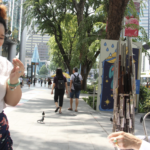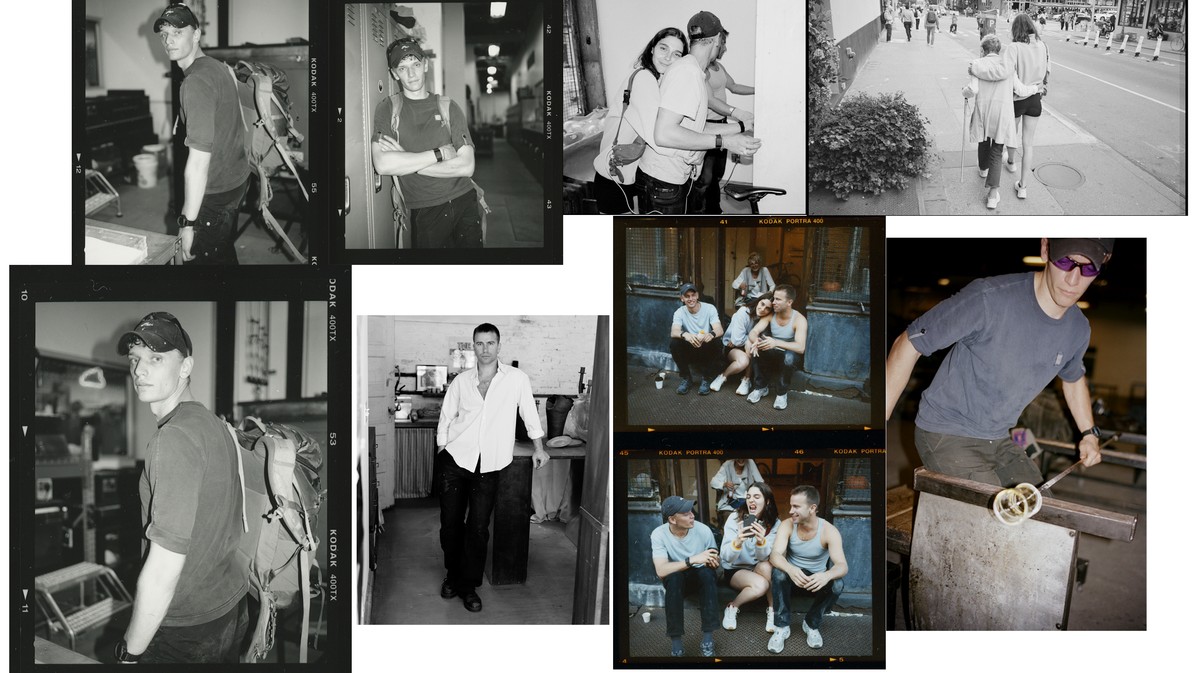Fathers #18 and Fathers #27
2006 - Photography (Photography)
30 x 45 cm
Taysir Batniji
Fathers #18 and Fathers #27 is part of a series of photographs and videos made in recent years in Gaza. Batniji addresses the representation of the over-identified human and physical space with the geographical and political situation in the region. He distinguishes himself from the fictions that have been previously created in the Middle East and offers a quieter and more retained vision of the of the intertwining tensions and oppositions in this area. Fathers offers an incomplete inventory of portraits that we often see framed and hanging on the walls of cafes, stalls, shops, workshops and other workplaces in Gaza and the Middle East. Often old and yellowed, sometimes dusty and slanted, these portraits rarely have links to the current owner and they relate instead to the person who founded the place and who left long ago. Since these places are overloaded with symbols and signs of presence (s) and disorder (s) but devoid of human inhabitants, or their owners, they become a particular paradigm of some sort of “still life”. This kind of places seem full (of products, objects, memories and signs of life) and empty at the same time. By overlooking different temporalities, memory and regards, or by being petrified, like ruins after a disaster that nobody will ever know, they belong to the present and to the past. The power of these images lies in what they hold as much as in what they reveal.
The work of Taysir Batniji, a Palestinian artist born in Gaza shortly before the 1967 war and the Israeli occupation, is tainted with manifestations of impermanence and itinerancy, belonging and uprooting, personal memories and historical events. Engaging in a number of different formats, including drawing, installation, photography, video and performance, Batniji has developed a strong, coherent body of work, which observes and treats with a certain sense of poetry, oneirism and sometimes acridity, the topics of migration and identity. Rooted in social and concrete realities, his work stretches the frame of documentary practices to question methods of depiction and narrative making. As Batniji states, “my works are perhaps less concerned with a specific topic or situation, and moreover an inquiry into representation itself” in a way that aims to explore and demystify the liminal space between reality and its representation.
Colors:
Related works sharing similar palette

© » KADIST
Jarrett Key
2020Jarrett Key’s practice combines several modes of production into a single frame, incorporating sculpture, painting, and performance...

© » KADIST
Otobong Nkanga
2015Tsumeb Fragments was produced for the exhibition at Kadist, “Comot Your Eyes Make I Borrow You Mine” in 2015...

© » KADIST
Liu Chuang
2014Categorized as low-level literature, a “Love Stories” book is a romantic popular fiction of proletariat China, read mainly by teenagers, students, and young workers...

© » KADIST
Cerith Wyn Evans
2008Untitled (Perfect Lovers + 1) by Cerith Wyn Evans takes as its starting point Felix Gonzales-Torres’s seminal work Untitled (Perfect Lovers) , in which two clocks were synchronized and left to run without interference, the implication being that one would stop before the other...

© » KADIST
Nicholas Buffon
2016A series of works from 2016 document his neighborhood, replicating buildings and businesses he frequents within four blocks of his New York apartment...

© » KADIST
Proyecciones Espacio Odeón (Bogotá, Colombia) y Museo La Tertulia (Cali, Colombia) ¿Cómo enfrentamos la incertidumbre de estos tiempos? ¿Puede el juego, los sueños, o incluso las alucinaciones ayudarnos a imaginar otras posibles trayectorias? ¿Qué tipo de prácticas nos permiten relacionarnos con los territorios que habitamos? Tomando como punto de partida el potencial de lo inquietante en medio de una amenaza invisible, Sigo esperando es una serie de proyecciones en las fachadas del Espacio Odeón (Bogotá) y del Museo La Tertulia (Cali)...














